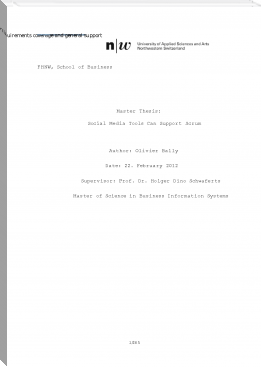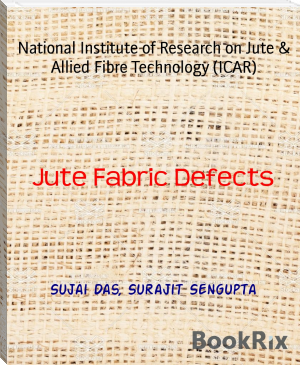System Engineering & Design Architecture by Sander R.B.E. Beals (important books to read TXT) 📕

Read free book «System Engineering & Design Architecture by Sander R.B.E. Beals (important books to read TXT) 📕» - read online or download for free at americanlibrarybooks.com
- Author: Sander R.B.E. Beals
Read book online «System Engineering & Design Architecture by Sander R.B.E. Beals (important books to read TXT) 📕». Author - Sander R.B.E. Beals
Still though, I remain convinced that any such scheme can be seen through at a point where we are not seriously harmed. Sure, we may have lost some money, or some faith in others, but that has gained us a new and potentially more stable foothold in the world around us. Even I recently went for one of those illusions, where I couldn't see the angle in it until it was too late. Fortunately my bank trusted me enough to believe me when I said I'd done it in good faith, but that was beside the point: I fell for it because the setup time was over half a year, and only very gradually drew me into the story of the deception I couldn't see. And of course I should have noticed that Genesis' song entitled “the Lady Lies” played far too often when I was engaged in answering all those mails... Still though, that says nothing about other ladies, but all the more about E-mails coming from ladies you've never met before, claiming to have found you on the Web!
And then there is the concept of Advertizing from the 'middle men': they run ads for legit companies, and get paid based on a hit count for certain files on the web. By imbedding these in sites that give away stuff for free, like programs, images, movies or whatever, they make a few cents with every hit, which can actually amount to quite a bit. We've all seen the ads for get rich quick schemes, which show huge stacks of money, and fancy sports cars. I'm not sure what happens next in every case, but my experience so far has only made me aware of the most immediate consequence: you have to shell out the required thirty or so dollars to acquire the manual to richesse. And after you acquire this, it sends you to a site where you have to decide which products you want to advertize, at a few cents a click. Well guys, I do have a domain, but I'm not going to pollute my own nest with cuckoos eggs coming from someone else....
Improving the SystemBefore we begin with the revolutionary part of this document, let's first create a system to work with, based on the simple objects of any everyday Home computer, whether it is Windows, Linux, Apple or Android:
Files
Folders
Programs
Shortcuts
Windows
Copies
In fact, that is all you need to make a great data structure for everyday use. Because, believe it or not, we humans are every bit the processors we designed in our modern computers. It just takes a bit of becoming aware of it! Now I've placed the Shortcuts in the red sphere, because they are the most dangerous elements of the whole structure. If a file gets moved or deleted, most systems won't automatically warn about any hazardous consequences for the shortcuts pointing to them. Of course they can point to files, programs and folders, but they can't point to a window, and they don't automatically attach themselves to a new copy of a file or program. But every conceivable structure for working through certain things can be created with these elements. Just call them 'Digital Lego'.
Still, many people do not stick to a clean desktop policy, either real or virtual. My eldest daughter used to have a screen full of icons, and only knew the whereabouts of the right icons by approximation. Luckily for her, a great free program like Stardock's Fences is available to give you an additional structure element that lies on your desktop and is a sort of folder for desktop icons. You just drop them in a given area called a fence, and they move with the (transparent) fence when you move it. But I digress...
Let's backup a little bit, and I don't mean duplication of data, but rather a recap just to make sure we know what we are talking about. A folder can quite neatly be used to create a Priority Stack, whether you use fences or folders for it. But since Windows Explorer tends to want to decide on its own where to place the window once it opens, I prefer Fences for now. Just make a high fence, one icon wide. You can then decide how to order the icons inside it by simply dragging them into their appropriate order.
Now we might call it work, but since I've put on the movie Laws of Attraction, with Pierce Brosnan and Julianne Moore, boundaries between work and private life, or even work and love tend to fade...
Don't get me wrong though, I love work, but sometimes my head is on other things, and I tend to slip up royally regarding the small details. That mainly happens because my heart isn't in the small details, but in the grand scheme of things. Still, that merely means that whatever I do next, doesn't amount to anything. The only thing that matters is whether I love doing it.... and guess what, I'm not in it to improve the System, but instead to allow it to grow.
Redefining the SystemEver since computers came to develop in force, we have been using so-called von Neumann based systems to have our computing done for us. Now that system can quite neatly be summed up as a SevenSphere, which may indicate why it has been such a succesful system. How far we've come may well be summed up by the statement an IBM spokesman expressed when they presented their first IBM mainframe to the world: "we foresee a market for as many as eight of these systems", thus making it the understatement of the millen-nium. Microsoft founder Bill Gates added his own understatement to that in 1974, when he claimed that: "640 Kbytes of memory ought to be enough for anybody". And while me and my colleagues marveled at the ability to buy a hard drive for less than 1 guilder per MB back in '89, I just this week purchased a 32 GB USB stick for a little over a Euro per Gigabyte: that is a 500-fold increase in storage capacity per Euro, and a physical improvement as well: no moving parts means it doesn't break when you drop it!
But the von Neumann implementation we use has one slight flaw: information stored can be seen as instructions or data, but in and of itself the information in a given memory location is not marked as such. So once a piece of data is seen as an instruction, the program will soon crash because the 'instruction' might make absolutely no sense. This flaw is quite often employed by virus makers to invade systems, if you would want to go in that direction. Personally, I figure the virus conspiracy is an illusion: back around 1990 or so, I read about the exploits of the Frodo virus: it would go as far as to make it so that any process reading randomly in the entire file would only get the original file data returned. Since then there is no way to detect the actual presence of the virus, how come all other viruses are detected on the basis of just a certain signature not longer than 3 or 4 bytes? I've actually used my system without antivirus software for three months, after which I checked with my favorite antivirus suite: it found only one harmless infection on over 6 million files!
Remember how in the previous chapter we introduced Integrity as an essential component of our Systems? Why not build this into our software in the first place? That might mean that we should not only add the information on whether a given set of bits or bytes is an instruction or a piece of data, but we should also be able to determine if it is a valid value, because the metadata of the instruction or data is included in it. Kinda like DNA, which we know is constructed out of the four constituent parts, and the spiralling strings that weave it together. We humans can recognize it as such, because the essentials of its construction are contained within the design of the DNA, and because our Knowledge has neatly tagged and categorized the parts for future use. The fact we called it DNA is merely a label that says what it is, instead of the information on what it really consists of.
Now XML is essentially the same: the top level tag names a certain piece of XML, but the nested elements define the structure. Thus we can describe information of arbitrary complexity by nesting definitions if need be, while still retaining the essence of simplicity. Instead of letting the computer hardware take a set of bytes which is essentially the width of the operations that the processor uses (and which might be instruction or data), we can process information with built-in structure and arbitrary length.
Is there any coincidence that I am rereading this as Andrew's owner asks him to replay the events of his daughter's wedding that day? Moviemakers can imagine progress, but engineers have to fill in the details in order to make it a human reality: It can be made quite clear, that the bleeding edge of research is about 40 years ahead of the production of hot new consumer items! And to comment on that, the movie just shows me the dialog between Andrew and his closest human friend about freedom..... (no longer being a customer appliance).
And if you think that an overstatement, let's cycle thorough a few





Comments (0)